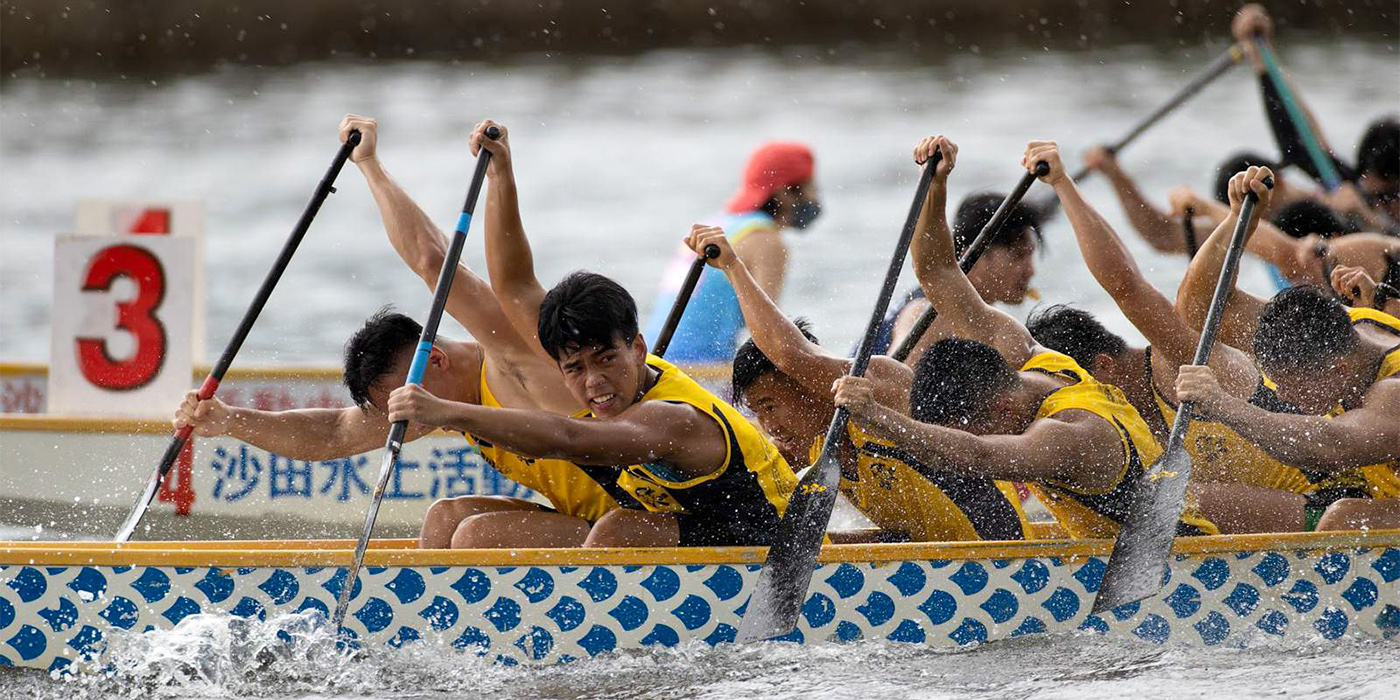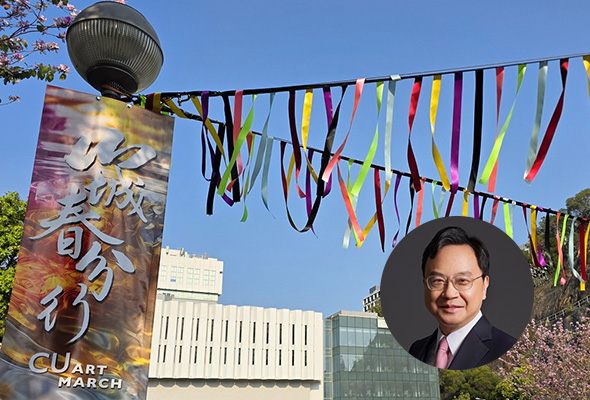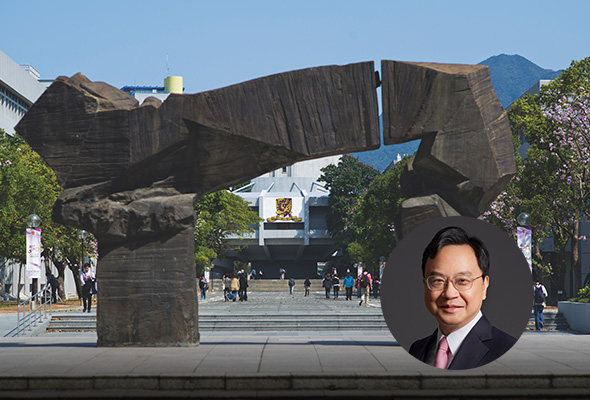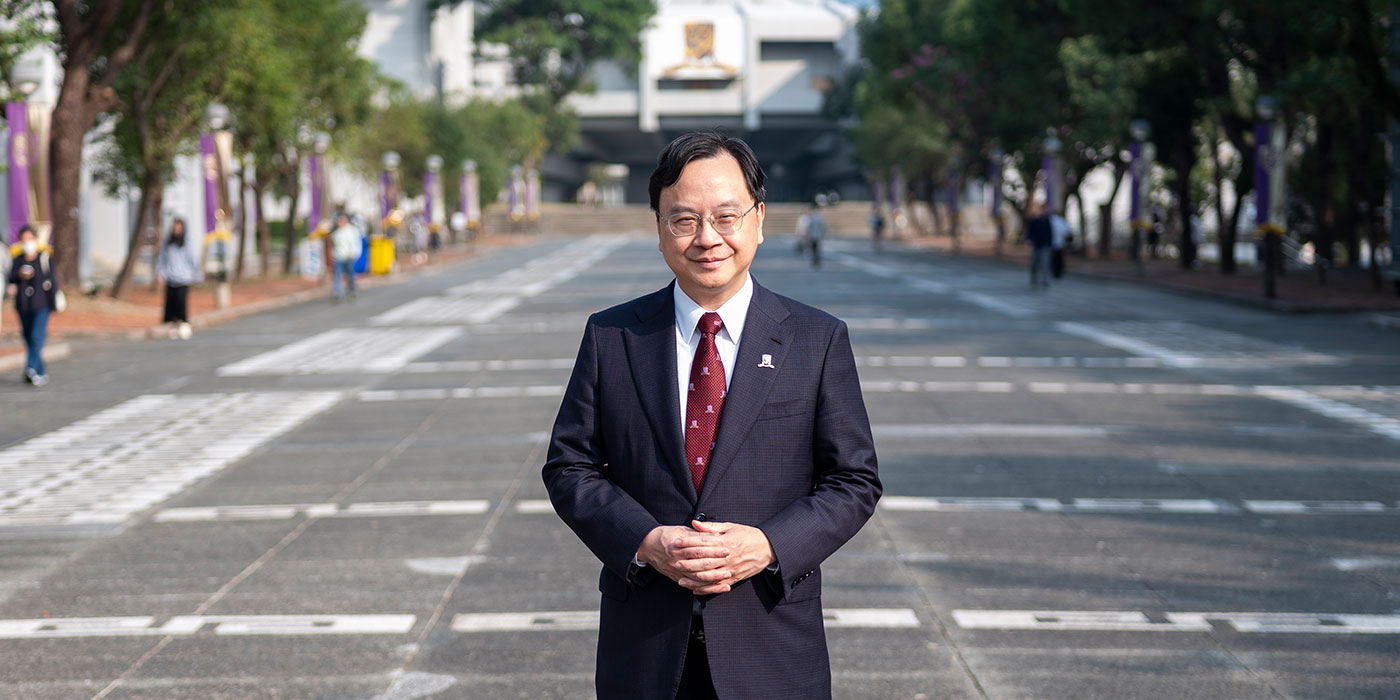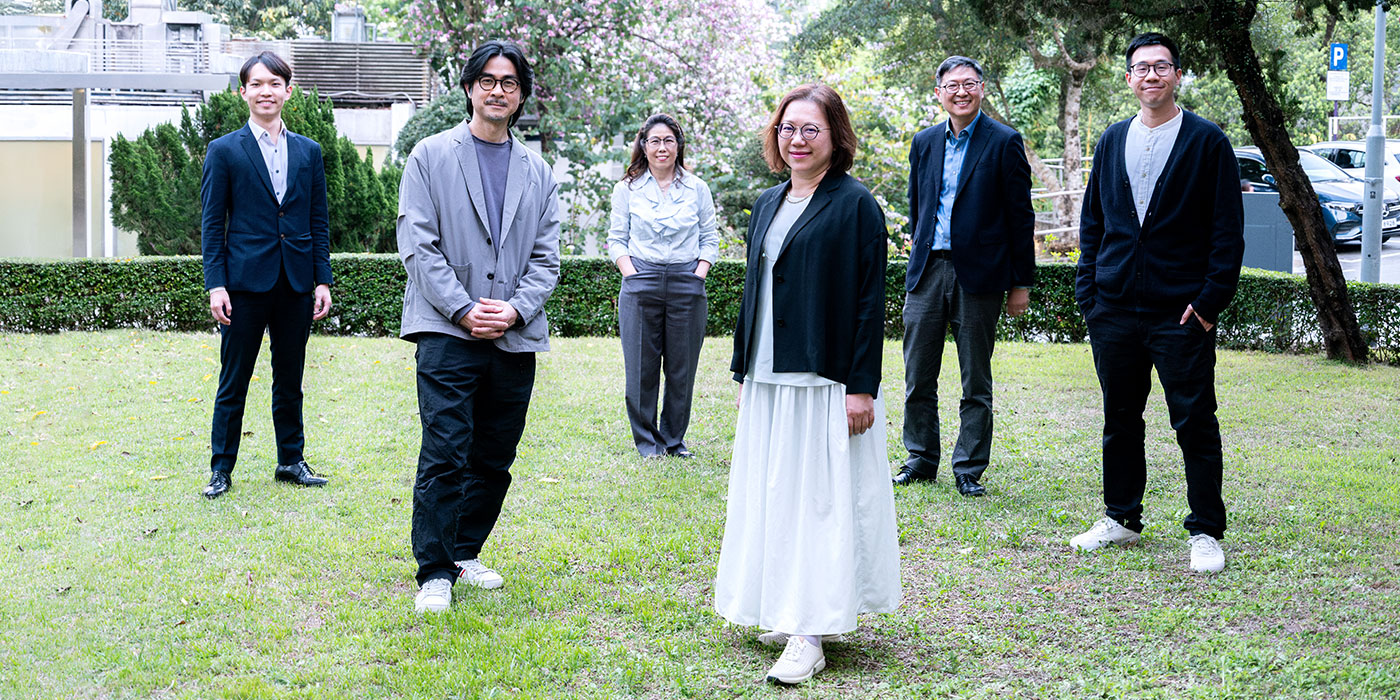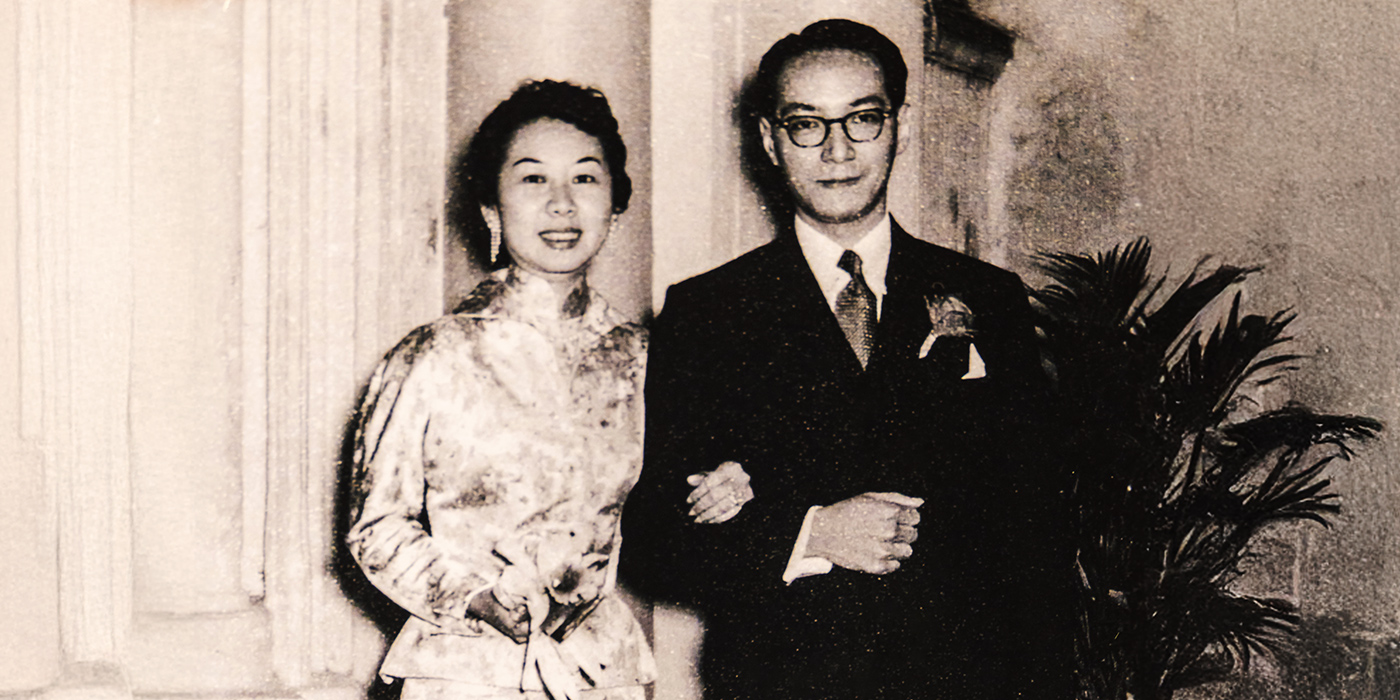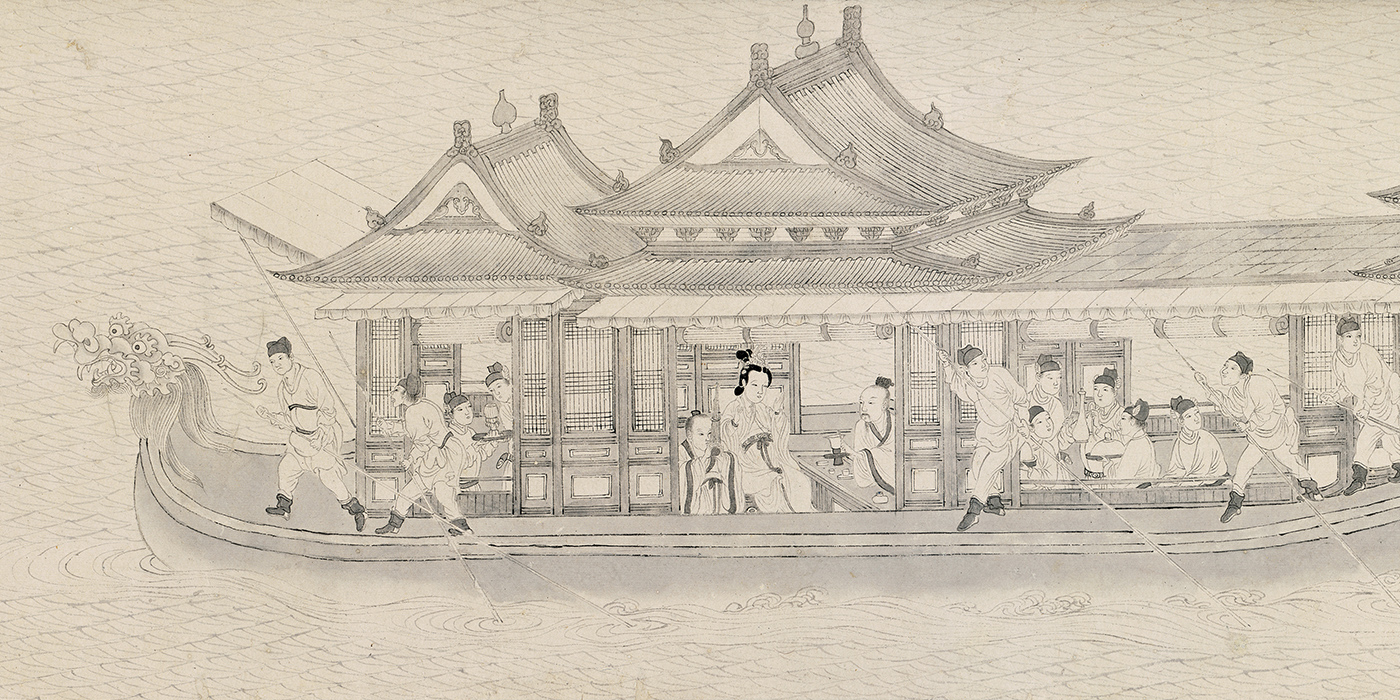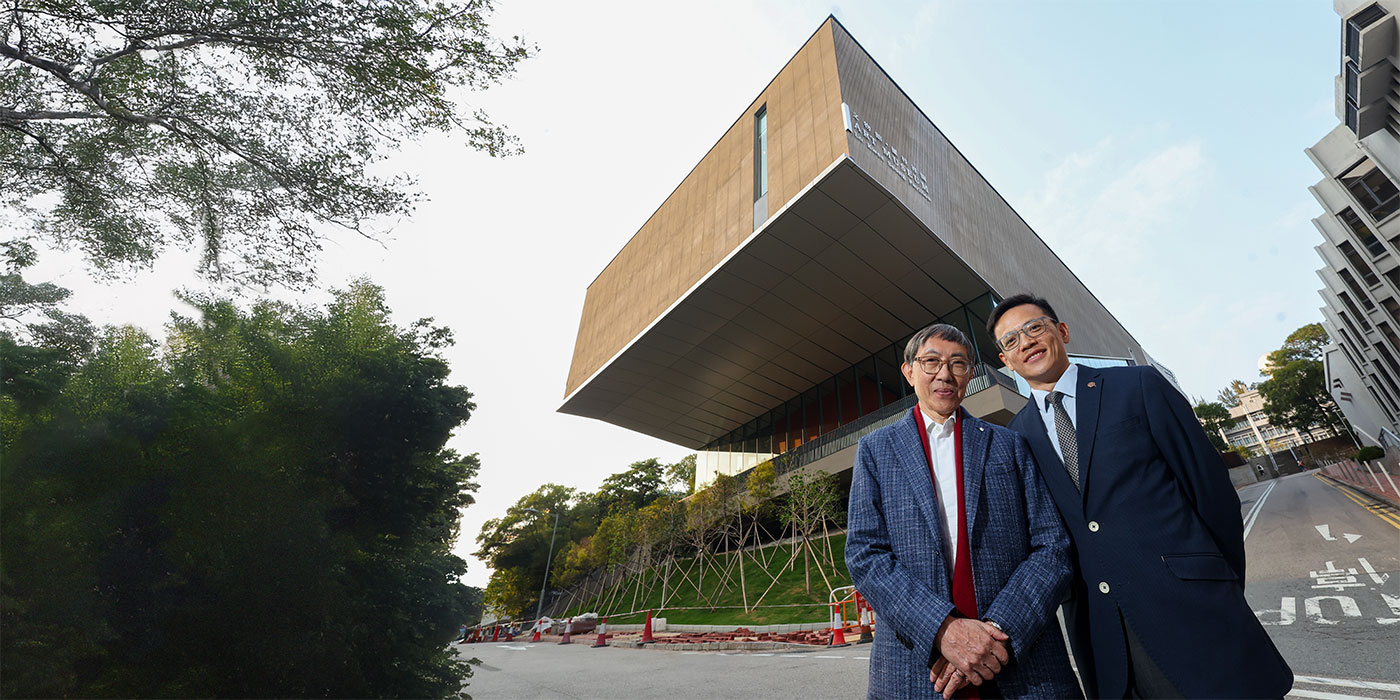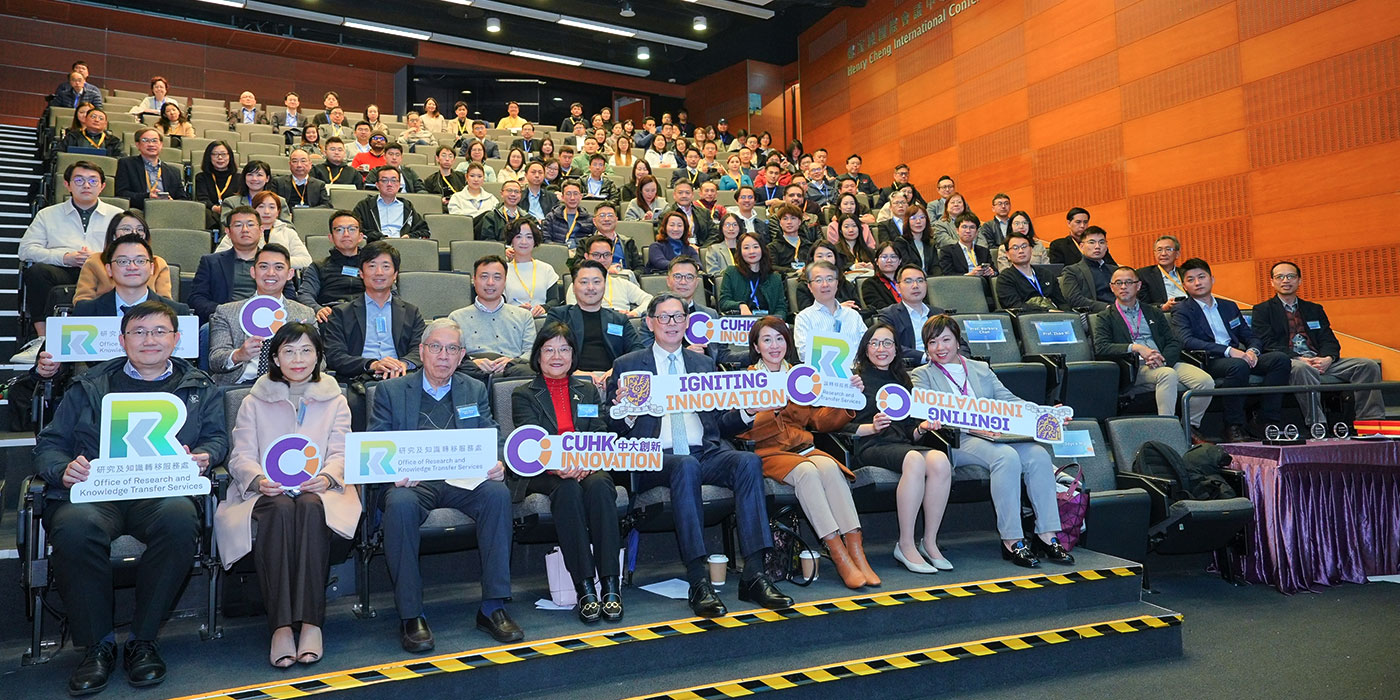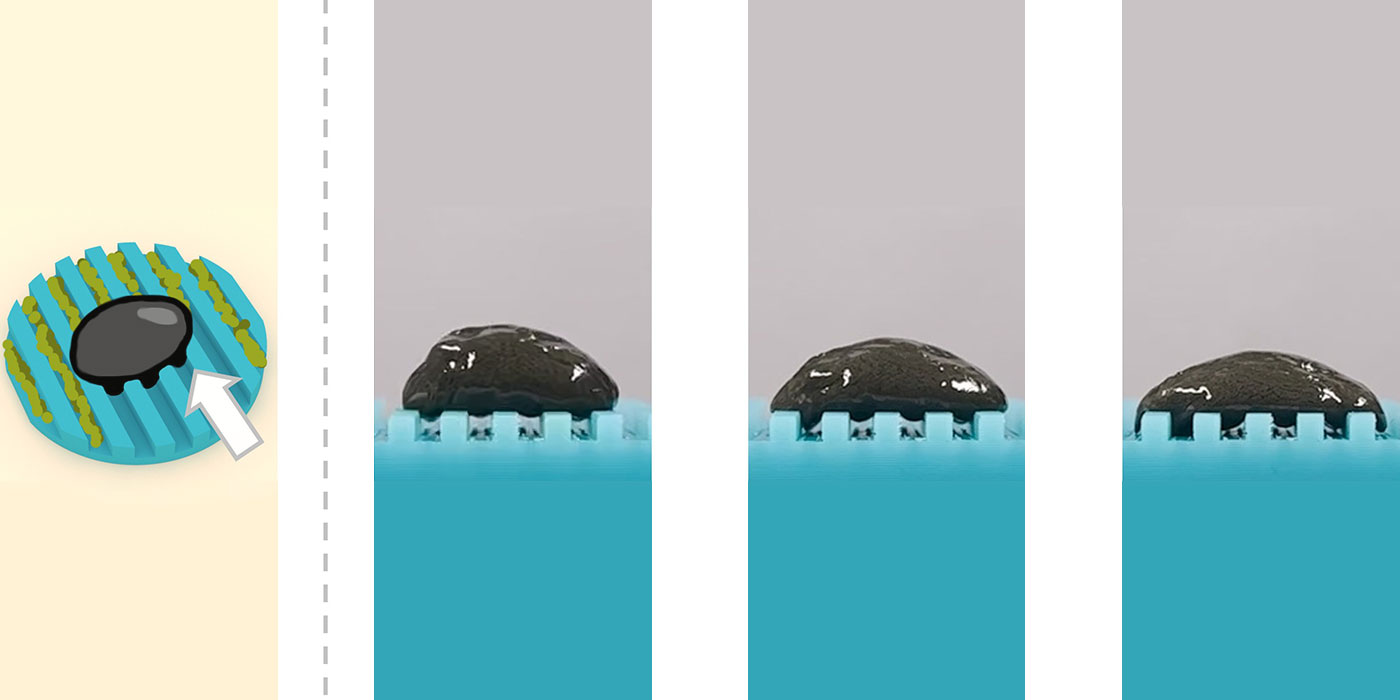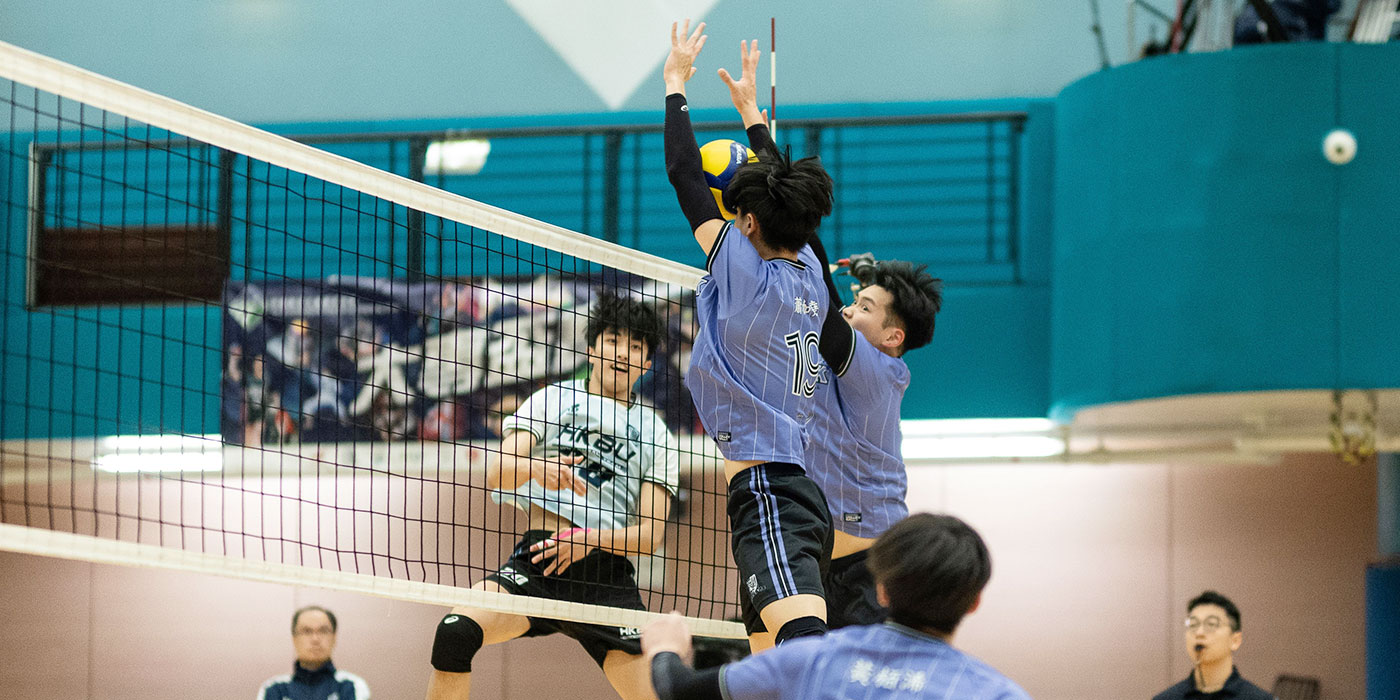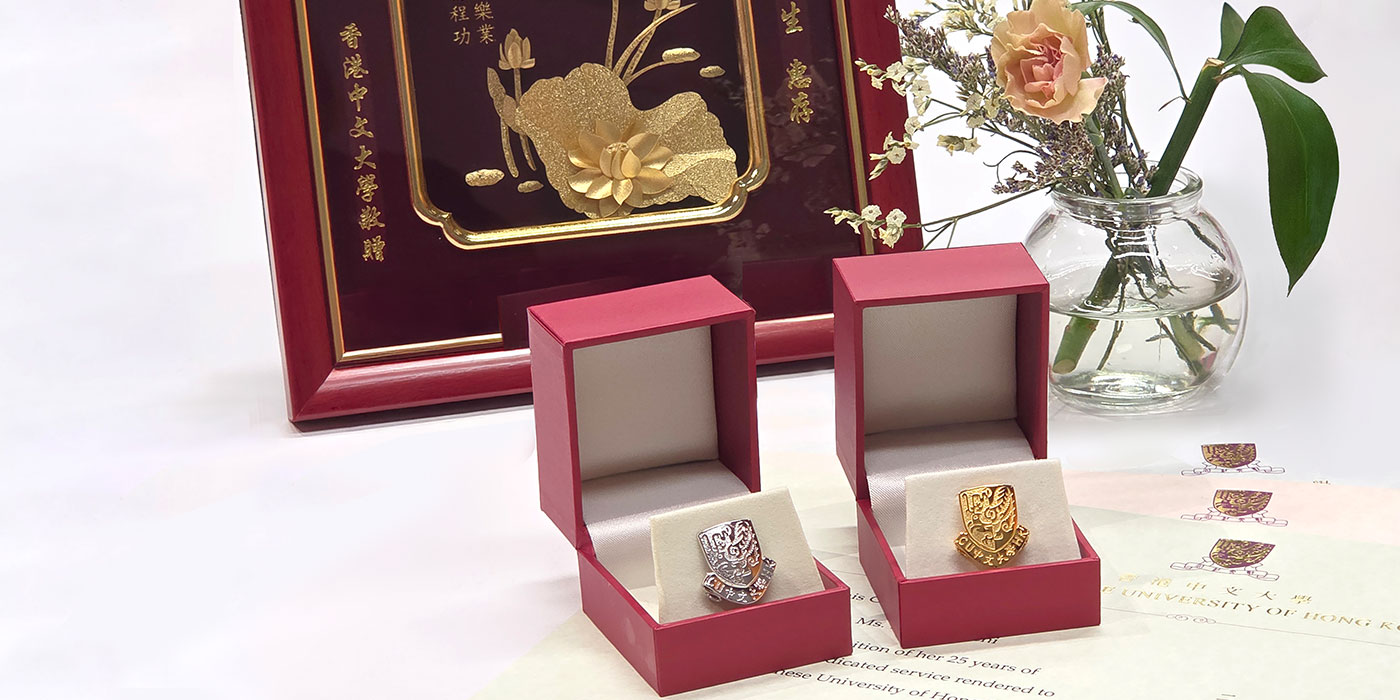Champion of dragon boating
Matthew Lai braves the winds and waves with learners
Teamwork is what keeps a dragon boat going, a central theme that instructor Matthew Lai emphasises over and over again. The University alumnus, fresh from teaching a two-hour paddling class right before the interview, is a picture of single-minded resolve as he speaks of dragon boating, no signs of weariness apparent where his passion is concerned.
“Dragon boat racing does not involve heroism,” says Matthew, his face beaded with sweat in the afternoon sun. “It is impossible to steer the boat through sheer individual effort. Everyone must work together to keep the dragon boat moving forward.”
Matthew’s knack for keeping pace with other paddlers is a defining element in his rise from newbie to competitive athlete to trainer in a few short years. He did not try out the sport until his third year in CUHK. The cheering and paddling in sync to cross the finish line with teammates invariably left him on cloud nine, and he would train with gusto five or six evenings a week while juggling Mechanical and Automation Engineering studies at United College.
Following graduation in 2021, he qualified to join the Hong Kong China Dragon Boat team. It opened the way for him to compete in the Singapore Dragon Boat International Race and the Hainan Sanya Dragon Boat Championship. In Singapore, his team won the championship in the Hong Kong Cup’s mixed category. Ever since his passion for dragon boating was sparked, he has channelled his energies into the CUHK dragon boat team.
What makes a good boat and team
The boat is a reflection of the times. In traditional races held in estuary districts such as Ap Lei Chau and Tai O, fishermen would use heavier and bigger wooden dragon boats according to their customs, seating more than 40 paddlers in up to 22 rows, Matthew says.
“The dragon boats used in competitions nowadays are mostly made of fibreglass, which are lighter and faster to paddle, and are also cheaper and more durable,” he says. “The ones used in the Sha Tin dragon boat races are examples.”
As for the racing team, it comprises the drummer, paddlers and steersman, embodying the spirit of teamwork. He explains: “For a 10-person ‘small dragon’, the first two rows of paddlers don’t necessarily need to be the strongest, but they must have a good sense of rhythm and be able to control the paddle stroke rate well. It’s because they’re responsible for leading the paddling rhythm for the rest of the team.
“The heavier and stronger paddlers should sit in the third and fourth rows to anchor the boat’s weight downwards, increasing contact with the water.”
Chemistry among the paddlers is one thing, self-discipline is another. “Regular training to maintain peak performance and weight control are essential. Being overweight can become a burden on your teammates.”
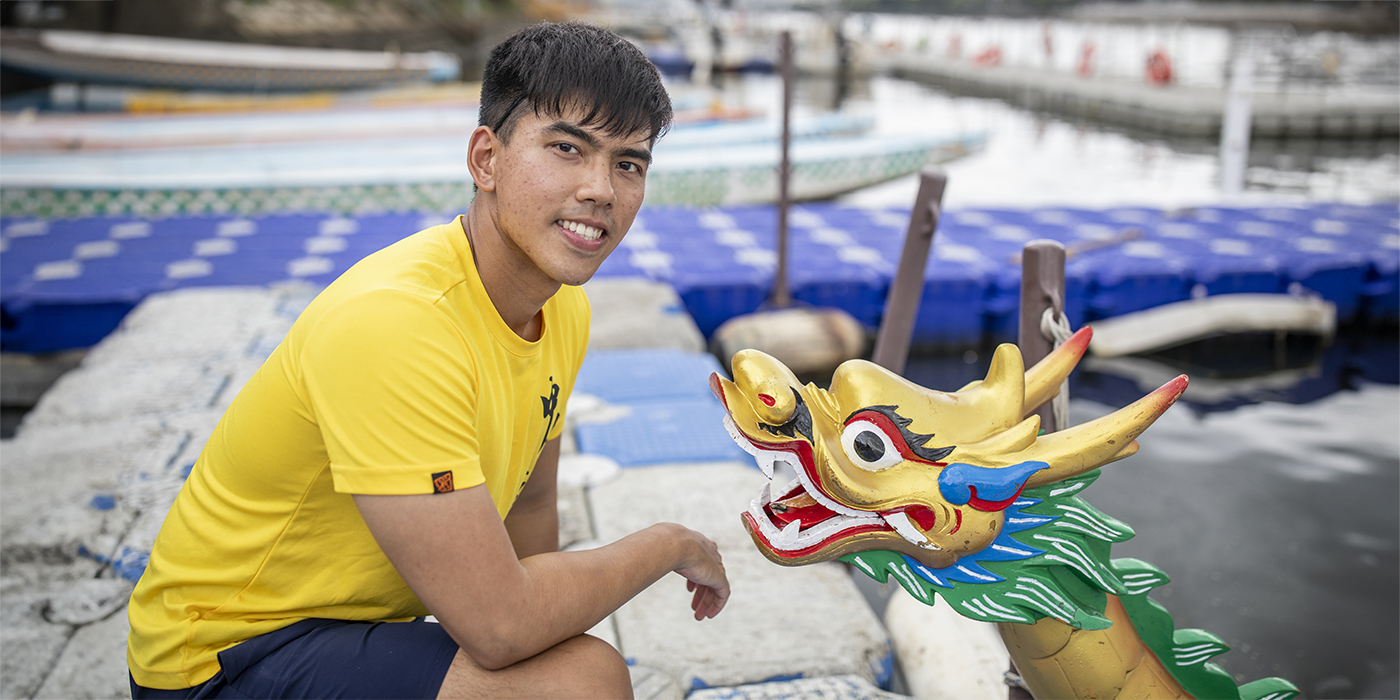
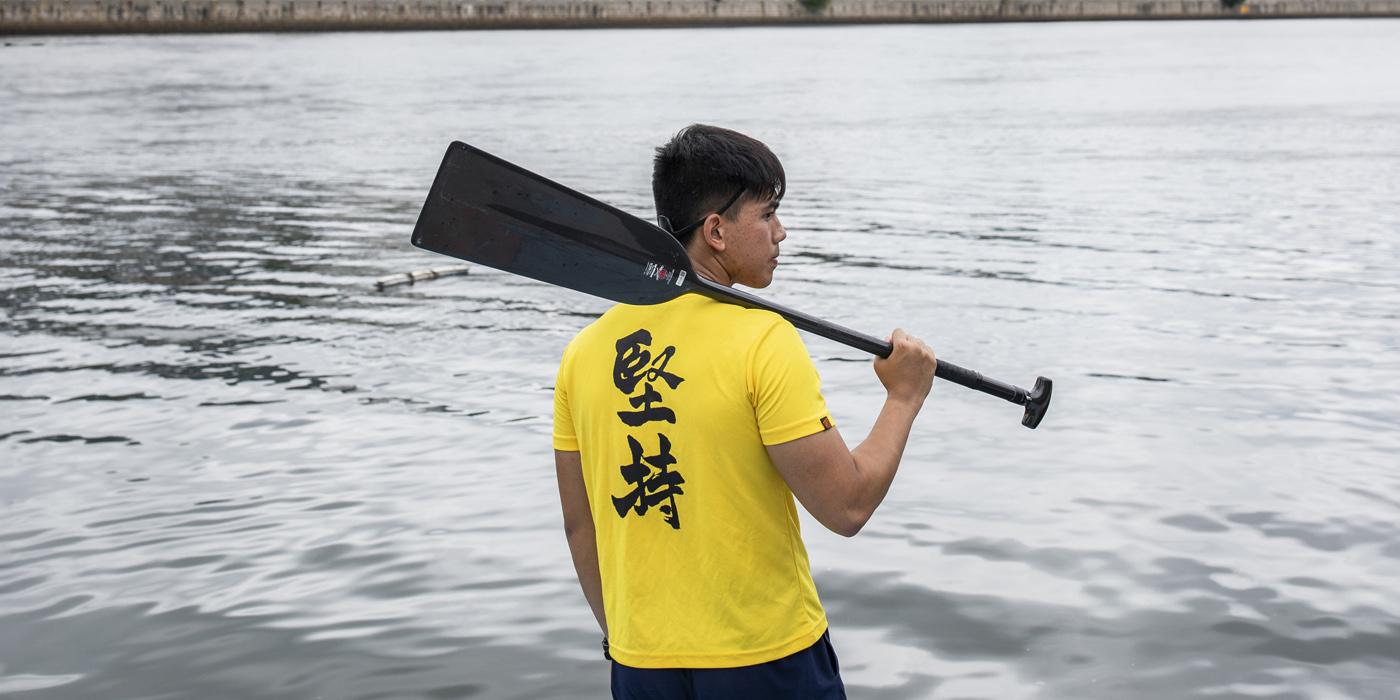
The Sha Tin Shing Mun River is where the CUHK dragon boat team have trained countless times, he says. They participated in the inaugural International Elite Universities Water Sports on 1 June, competing with 25 other universities, including the University of Cambridge, Harvard University, Yale University, Peking University, Tsinghua University and Zhejiang University. CUHK, represented by 12 athletes, won first prize in the 200-metre straight-line race.
Matthew attributes their high morale and outstanding performance to the University’s unique collegiate system.
“The college system strengthens cohesion among students, and they are accustomed to forming teams to compete in sports competitions with other colleges. Moreover, CUHK people value inheritance. Graduates would return to their alma mater in their spare time to train younger counterparts.”
Inheriting a centuries-long culture
Hong Kong’s annual boat racing event, held during the Dragon Boat Festival, originated in the Lingnan region of China, where people believed the water that passed through the oars of dragon boats had become auspicious. Matthew says that the sport in the domestic context is closely related to the fishing culture.
“Each fishing harbour had its own ‘chapter’. Fishermen of the same chapter built a tacit understanding among themselves and had a sense of belonging to their own chapter. During holidays, they would form teams and race dragon boats with fishermen from other chapters to showcase their paddling skills.”
Modern dragon boat racing started in Hong Kong more than 40 years ago. In 1976, the city held its first international dragon boat races. A team from Nagasaki, Japan, was invited to compete with nine local teams, laying the foundation for the internationalisation and standardisation of the sport, which has since evolved into the Hong Kong International Dragon Boat Races that gather athletes from around the world.
This year’s event was held on 15-16 June. More than 170 teams from 12 countries and regions raced 500 metres in standard dragon boats, each carrying 20 paddlers, on the Tsim Sha Tsui East waterfront.
The impression of dragon boat racing has always been that of a custom during the Dragon Boat Festival. Events such as the Hong Kong International Dragon Boat Races and the Tai O Dragon Boat Water Parade are held as part of the festivities. However, Matthew begs to differ as he feels dragon boating should not be limited to a festival.
“Just like marathons and rowing, dragon boat racing can be trained and competed in throughout the whole year,” he says.
To promote the sport and dispel the public’s impression of dragon boating being limited to the festival, Matthew joined the social enterprise Hywind Watersport, which CUHK dragon boat team members founded in 2018. He then pioneered parent-child dragon boat experiences and dragon boat island tours. Since 2021, more than 14,000 people have tried out the experiential activities.
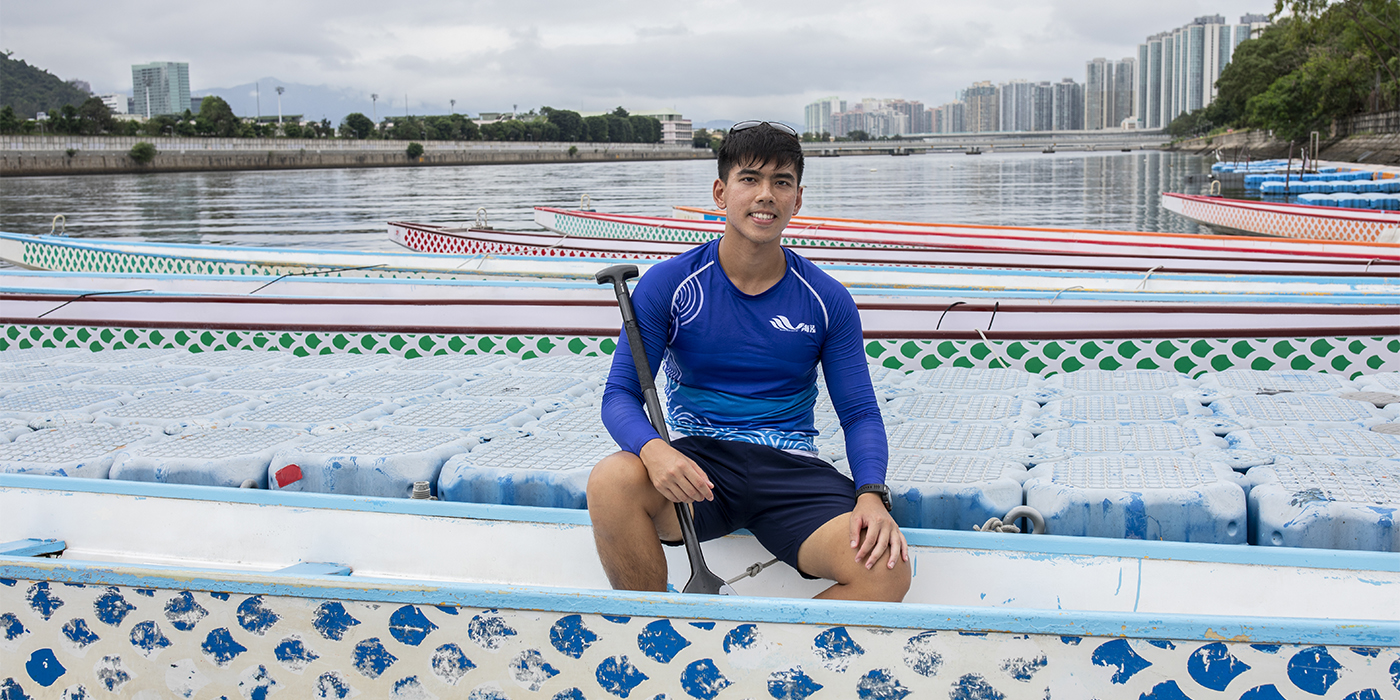
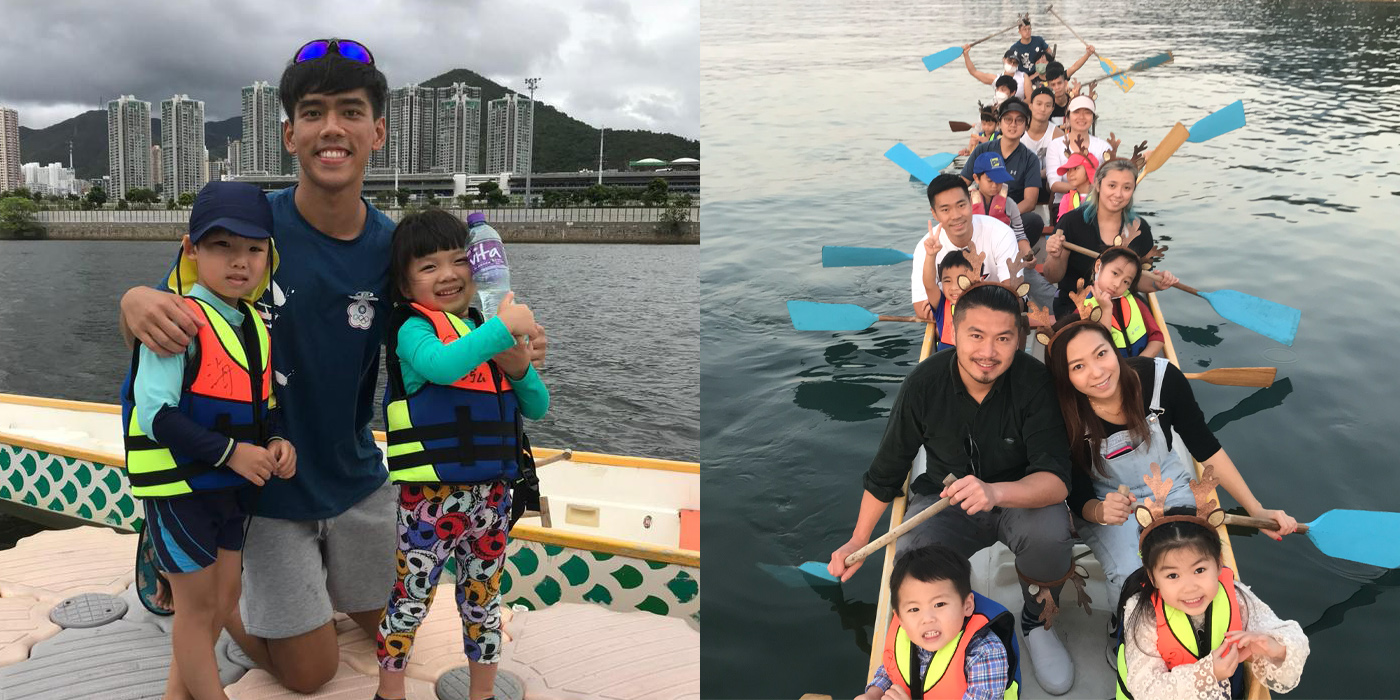
He says: “During the pandemic, students had fewer social interactions and their physical fitness declined due to the suspension of in-person classes. Therefore, we organised Hong Kong’s first parent-child dragon boat experience after the pandemic situation eased a bit. Children aged three and above could participate accompanied by their parents.”
Everyone was strictly following the government’s control measures and wearing masks at the activities. Parents found that their children could focus on listening to the coach’s instructions and concentrate on the paddling. The parent-child experience also improved their relationship.
In another initiative, Hywind Watersport has launched a one-year Dragon Windbreaker programme to help underprivileged youth learn the soft and hard skills of the sport and strive towards the goal of becoming coaches. It aims to lay a possible career path and cultivate in them a positive outlook on life and resilience.
“We first train them to obtain steersman certification, and then coach certification. We have so far trained 40 people to become coaches, and they have joined the Hywind coaching team to teach parent-child classes.”
Matthew holds down a white-collar job during the day, and in his spare time, he attends training and provides dragon boat education to enhance the physical, mental and spiritual well-being of fellow Hongkongers. Looking to the future, he plans to establish a school in hopes that athletes can eventually make it a professional career.
“Dragon boat racing is now rated as only a B-level sport at the Hong Kong Sports Institute, and the athletes are all amateurs. They have to juggle full-time jobs and sports training. I hope that one day, dragon boating can be upgraded to an A-level elite sport, so we can bring dragon boating to the world stage, such as the Olympics.”
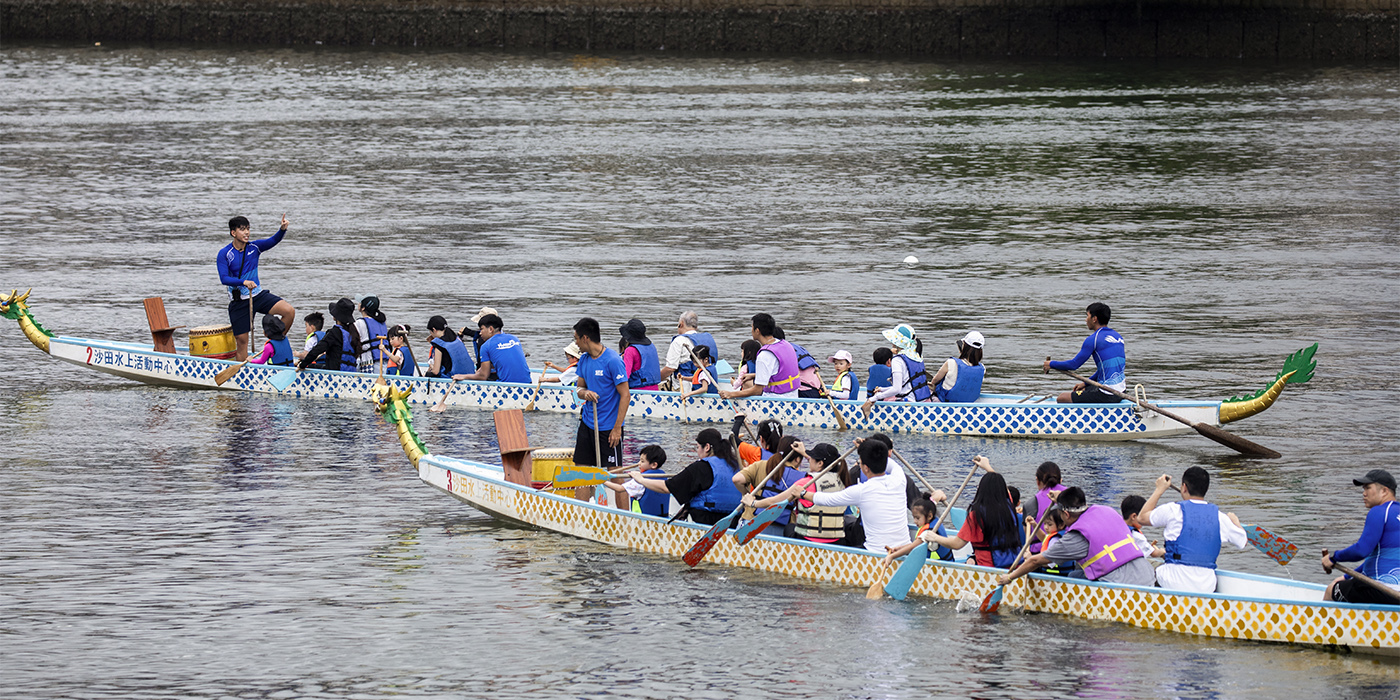
By Jenny Lau
Photos by LCT

